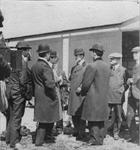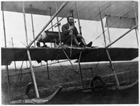On this day 13 April 1912
On this day 13 April 1912 Royal Flying Corps constituted
The Naval Air Organisation and the Air Battalion of the Royal Engineers are merged to form the Royal Flying Corps with Naval and Military Wings, constituted by Royal Warrant. The headquarters and flying school of the Naval Wing were at Eastchurch, Isle of Sheppey.
15 July 1912 The Admiralty promulgated details of the composition of the Naval Wing of the RFC. Men were required to volunteer for four years' service in the Royal Flying Corps followed by four years in the Reserve of the RFC. An officer selected for the Royal Flying Corps who had obtained or subsequently obtained at his own expense, the Certificate of the Royal Aero Club was refunded £75. Non-officer volunteers who held a certificate could apply to join the RFC and if selected were granted a commission of Second Lieutenant RFC and were also refunded £75.
George Cyril Colmore gained a Royal Aero Club Aviator's Licence, qualifying at his own expense. He made his first flight on 19 June 1910, flying Frank McClean's Short S.27 (Short Brother's airframe number S.26). In November 1910 the Royal Aero Club, at the instigation of Frank McClean, offered the Royal Navy the use of its airfield at Eastchurch along with two aircraft and the services of its members as instructors in order that Naval officers might be trained as pilots. 1 March 1911, Lieutenants Samson, Longmore & Gregory RN, plus Lieutenant Gerrard, RMLI commenced a flying training course at the Royal Aero Club airfield, Eastchurch, Isle of Sheppey. In October 1911, Samson became the first Officer Commanding the Naval Flying School at Eastchurch.



